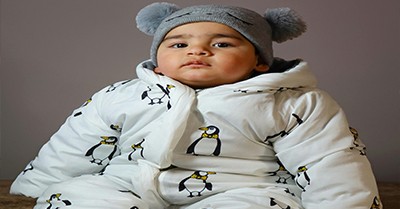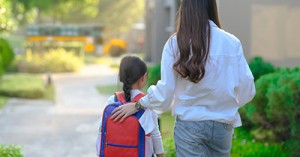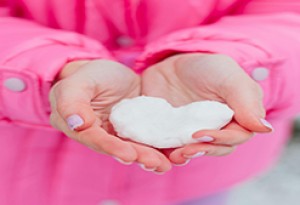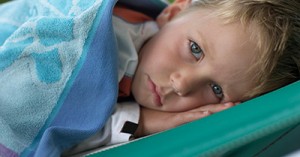Cold weather play encourages resilience and adaptability, helping children explore their environment in new ways. It enhances their ability to engage with seasonal changes and fosters a deeper connection with nature.
Why Winter Play Is Important
Outdoor play in colder months helps children develop resilience, adaptability, and problem-solving skills. It encourages exploration of seasonal changes, fostering curiosity and environmental awareness.
Benefits Of Cold Weather Play
Supports Vitamin D Absorption
- Even in winter, exposure to sunlight aids in vitamin D production, essential for bone health.
Physical Health & Motor Skills
- Movement in colder conditions strengthens muscles, improves coordination, and promotes overall physical fitness. Activities like climbing, running, and balancing develop motor skills crucial for growth.
Boosting Immunity & Well-being
- Outdoor play exposes children to fresh air, reducing exposure to indoor germs and strengthening immune function. Natural light supports vitamin D production, essential for bone health.
Encouraging Creativity & Exploration
- Children engage in imaginative play, storytelling, and discovery, inspired by the seasonal transformations in plants and wildlife. New textures and sensory experiences contribute to cognitive growth.
Building Resilience & Confidence
- Navigating colder temperatures teaches children adaptability and problem-solving skills. Overcoming minor weather-related challenges fosters independence and self-assurance.
Dressing for Winter Play
Dressing properly for winter play ensures children stay warm, comfortable, and safe. Here are some examples of effective winter outfits:
-
Base Layer (Moisture-Wicking & Warmth)
- Thermal underwear (merino wool or synthetic fabric)
- Long-sleeve shirts and leggings designed to wick moisture away from the skin
-
Middle Layer (Insulation)
- Fleece jackets or wool sweaters to retain body heat
- Insulated pants or thick leggings for warmth
-
Outer Layer (Weather Protection)
- Waterproof and windproof jackets and pants to shield against cold air
- Insulated winter coats with hoods for extra warmth
-
Accessories for Extra Protection
- Hands: Waterproof gloves or mittens to keep fingers warm and dry
- Feet: Wool socks and insulated, waterproof boots to prevent cold toes
- Head & Ears: Snug-fitting hats, earmuffs, or balaclavas to retain heat
-
Additional Tips
- Avoid cotton, as it absorbs moisture and stays wet, making kids colder
- Dress in layers that can be removed if children get too warm
- Ensure clothing allows for easy movement during play
Common Myths About Cold Weather Play
There are several myths surrounding cold weather play. Here are some common misconceptions:
1. Cold Weather Causes Illness
Many people believe that being outside in the cold makes children sick. In reality, viruses—not cold temperatures—cause colds and flu. Spending time outdoors can actually reduce exposure to indoor germs and strengthen the immune system.
2. You Lose Most of Your Body Heat Through Your Head
While wearing a hat is important, the idea that most body heat escapes through the head is a myth. Heat loss depends on overall exposure, and any uncovered body part can contribute to feeling cold.
3. Wet Hair in Cold Weather Causes Illness
Going outside with wet hair might make you feel chilly, but it doesn’t cause sickness. Illnesses like colds and the flu are caused by viruses, not temperature changes.
4. Cold Air is Bad for Lungs
Some believe that breathing cold air harms the lungs. While cold air can feel uncomfortable, it does not damage lung tissue. Wearing a scarf over the mouth and nose can help warm the air before inhaling.
5. Children Should Stay Indoors in Winter
Outdoor play is beneficial year-round! Cold weather play helps children develop resilience, motor skills, and creativity. As long as they are dressed appropriately, winter play is safe and healthy.
6. Cold Weather Stunts Growth
There is no scientific evidence that cold temperatures affect a child’s growth. Proper nutrition and physical activity are what truly support healthy development.
Playing Outside With A Runny Nose
Playing outside with a runny nose is generally fine, as long as the child feels well enough and is dressed appropriately. Fresh air can actually be beneficial, but here are some key considerations:
- Monitor Symptoms: If the child has a fever, is lethargic, or seems uncomfortable, they should rest indoors.
- Dress Warmly: Proper layering, including a hat, gloves, and waterproof boots, helps keep them comfortable.
- Limit Close Contact: While outdoor air is good, colds are contagious. Avoid close interactions with other children to prevent spreading germs.
- Encourage Gentle Activities: Opt for light play like a short walk or exploring nature rather than intense running or sledding.
- Prioritize Hydration & Rest: Ensure they drink plenty of fluids and get enough rest after outdoor play.
Playing in the cold weather doesn't make a child sick, but viruses—not cold temperatures—cause illness. In fact, spending time outdoors can help prevent sickness by reducing exposure to indoor germs. As long as children are dressed appropriately, winter play is a fantastic way to support their growth and well-being.
Talking to Your Child’s Educator
If any parents have concerns about their child playing in cold weather, please discuss this with your child’s educator. Educators can provide reassurance, safety guidelines, and insights into the benefits of winter play. Open communication ensures a balanced approach that supports both safety and learning.










